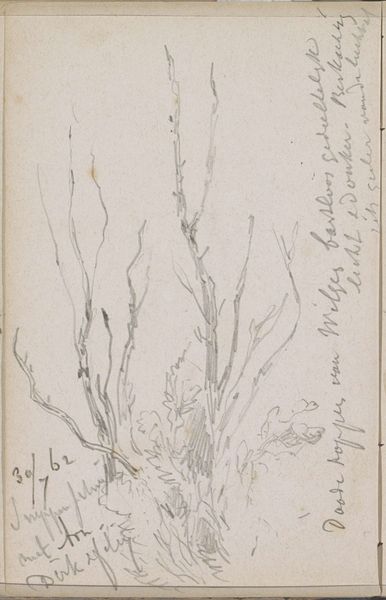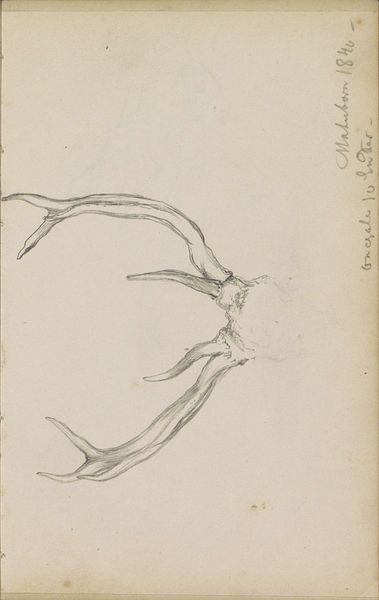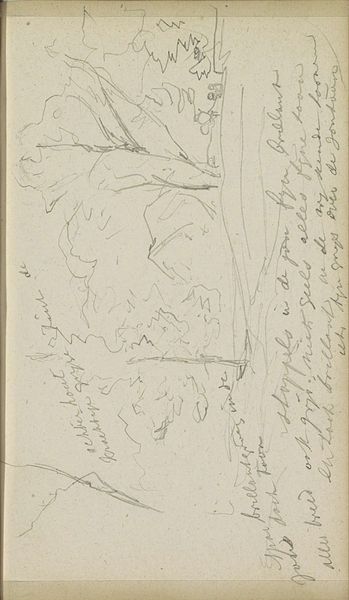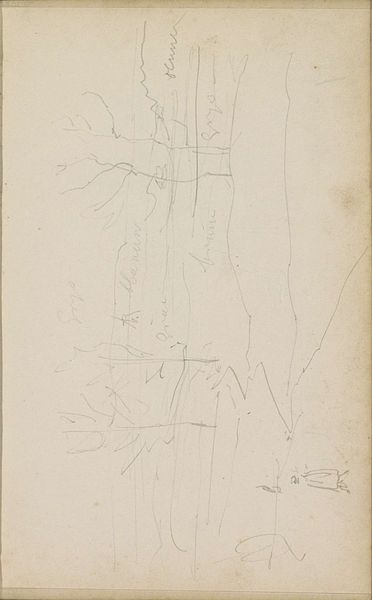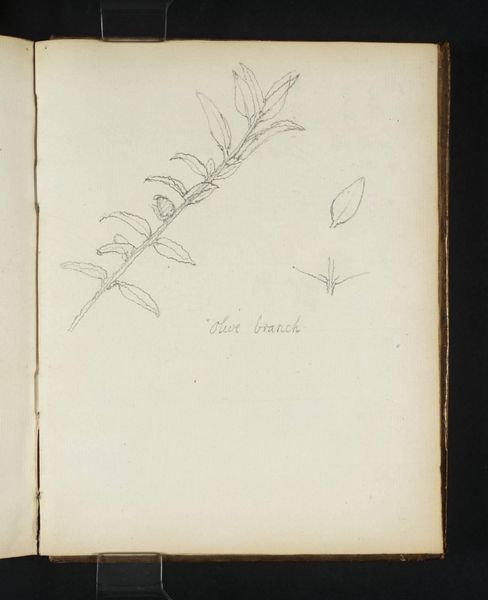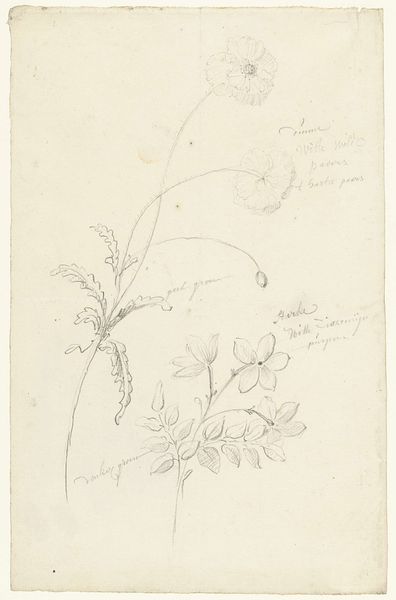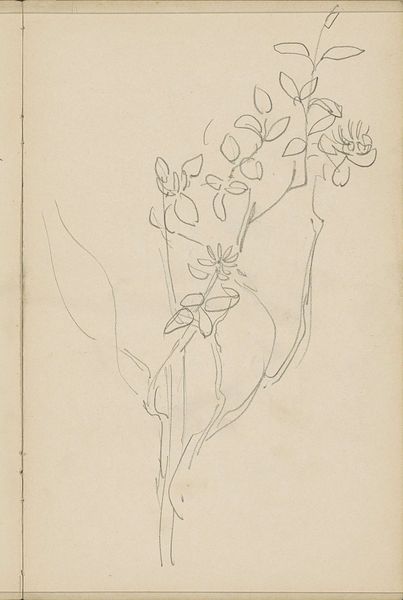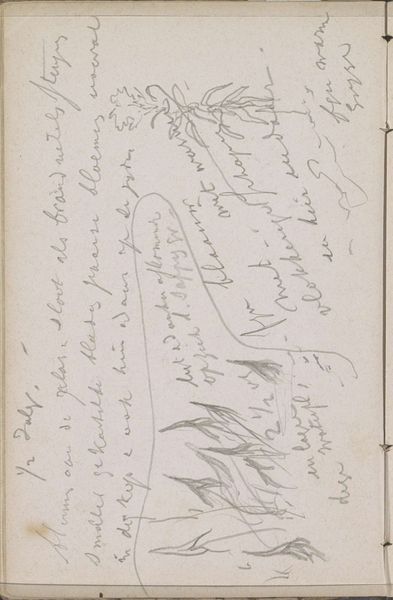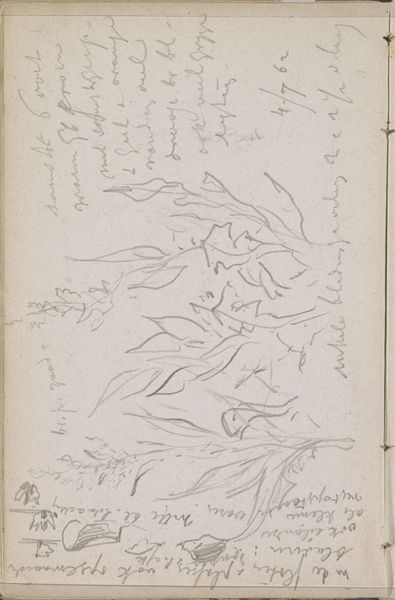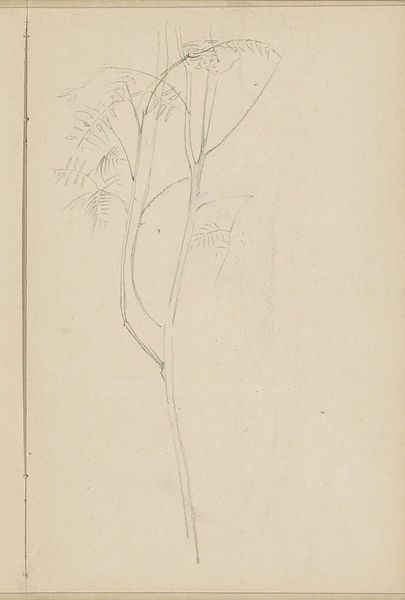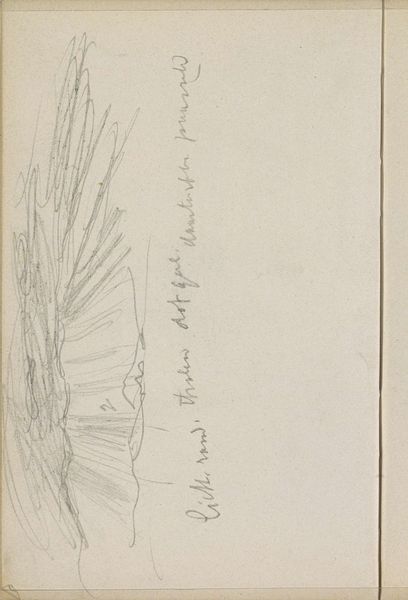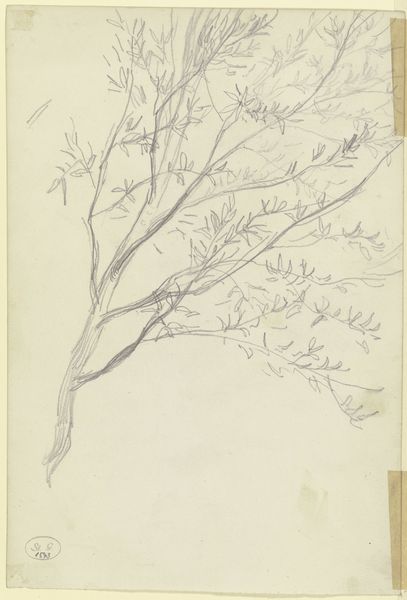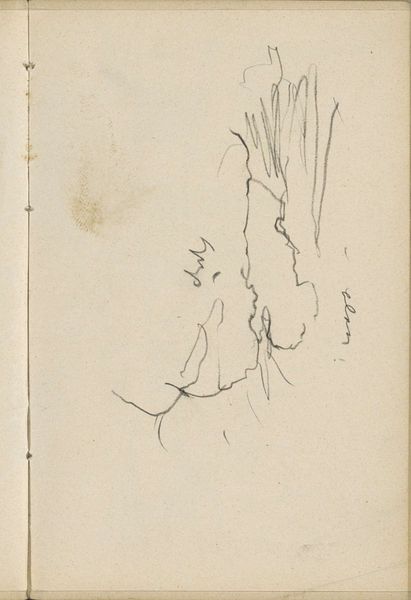
drawing, pencil
#
drawing
#
light pencil work
#
landscape
#
pencil
#
sketchbook drawing
#
watercolor
Copyright: Rijks Museum: Open Domain
Editor: This is "Beukenbomen," or "Beech Trees," by Johannes Tavenraat, dating from between 1839 and 1872. It's a pencil and watercolor drawing. It strikes me as very delicate and ethereal, like a fleeting impression. How do you interpret this work? Curator: Well, looking at Tavenraat’s drawing, I think it's crucial to consider it within the context of 19th-century Romanticism and the rise of landscape painting. These artists often sought to depict the sublimity of nature, but what about the power structures inherent in those representations? Whose nature were they celebrating, and who had access to it? Editor: That's a fascinating question. I hadn’t thought about it in terms of access. Curator: Consider the perspective – are we invited in, or kept at a distance? And what is the relationship between this idealized view and the realities of land ownership and resource extraction during that period? The Industrial Revolution was rapidly transforming the landscape, often to the detriment of marginalized communities. How does this delicate portrayal perhaps gloss over those harsh realities? Editor: So, you're saying that even seemingly innocent landscape drawings can be implicated in larger systems of power? Curator: Precisely. It’s about interrogating the gaze, and considering the untold stories embedded within the image. Who benefits from this idyllic depiction, and who is excluded? Editor: I never thought about landscape art in that way, but it makes me rethink how we interpret nature in art. Curator: Absolutely, and art, no matter the seeming subject matter, is never apolitical.
Comments
No comments
Be the first to comment and join the conversation on the ultimate creative platform.
